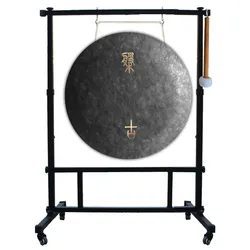Introduction
Sound waves are being increasingly used in the health care sector to diagnose, treat and manage the symptoms of a range of conditions and illnesses. In this article, we will explore what sound waves are, how they can help in health care, their advantages and disadvantages, examples of applications and techniques for optimising sound wave therapies. We will also analyse the challenges of sound wave research & development and the potential of sound waves to revolutionise health care in the future.
What is a Sound Wave and How Can It Help in Health Care?

A sound wave is a pressure wave passing through a medium like air, water or other materials. The oscillation of the wave created by a vibrating object propagates in all directions and can be heard and felt when the sound wave comes into contact with the human ear. In health care, sound waves are increasingly being used to diagnose and treat a range of conditions and illnesses. For example, sound waves are used to create ultrasound images which can detect and track changes in organs, tissues, and blood flow. They can also be used to detect blockages in veins and arteries, or to measure the flow of blood and other fluids within the body.
The Basics of Sound Wave Therapy
Sound wave therapy uses low-frequency sound waves to treat a range of conditions, including muscle and joint pain, circulation problems, neurological issues, skin disorders and some psychological issues. During sound wave therapy, a practitioner typically uses specialised technology to produce low-frequency, low-intensity sound waves which can be applied to the affected area. These waves shake the tissue, which helps to break down adhesions, reduce inflammation, promote circulation and stimulate cell regeneration, among other benefits.
Advantages & Disadvantages of Sound Wave Treatment
Sound wave treatment has numerous advantages over traditional treatments such as medications or invasive procedures. It is non-invasive and pain-free, and it typically requires fewer visits, meaning it is often more cost-effective. In addition, sound wave therapy has a low risk of side effects and it can provide long-lasting relief. On the other hand, sound wave treatment is not suitable for all types of conditions. It is important to consult a medical practitioner to ensure the treatment is right for you. In addition, the technology and techniques used in sound wave therapy can vary, so it is important to ensure the practitioner is qualified and experienced.
Examples of Sound Wave Applications in Health Care
Sound wave technology is being used for a variety of applications in health care, ranging from diagnosis and treatment, to surgery. Ultrasound imaging is a key example, as it helps medical professionals to identify blockages and abnormalities that cannot be seen with a traditional physical exam. In addition, sound waves are increasingly being used to diagnose conditions such as cancer, and for therapeutic treatments such as physical therapy and wound healing. Finally, sound waves are also being used in select types of surgery, such as orthopedic surgery and minimally invasive surgeries.
Maximising the Benefits of Sound Wave Technology
In order to maximise the benefits of sound waves in health care, it is important to ensure the right type of equipment is used and the right techniques are employed. For example, medical professionals should choose sound wave equipment that is calibrated and regularly maintained to ensure safety and accuracy. In addition, practitioners should ensure they are proficient in the use of the equipment and the application of sound wave treatments.
Potential for Future Sound Wave Treatments
The potential of sound waves in health care is immense. As research and technology continue to advance, sound waves could be used as an alternative to traditional treatments for a range of conditions, from cancer to neurological and psychological disorders. In addition, sound waves could be used to diagnose and treat issues at a cellular level, providing targeted and effective treatments for individual patients.
Exploring the Effects of Different Frequencies of Sound Waves

Different types of sound waves have different effects, depending on their frequency and intensity. Lower frequencies tend to penetrate deeper into the body and can be used for treatments such as wound healing, while higher frequencies can be used for diagnostic purposes and for breaking down adhesions in muscles and tissues. In addition, varying the frequency and intensity of sound waves can be used to tailor treatments to an individual’s specific needs.
Breaking Down the Challenges of Sound Wave Research & Development
One of the main challenges of sound wave research and development is understanding and predicting the specific effects different frequencies will have on the body. This requires an in-depth understanding of the complex physics of sound waves, as well as the ability to measure and quantify the effects of different frequencies. In addition, further research is needed to ensure sound wave treatments are safe, effective and reliable.
Techniques for Optimising Sound Wave Therapies
To achieve the best results from sound wave therapies, it is important to employ best practices to ensure treatments are tailored to each individual patient. This includes using the correct equipment, ensuring practitioners are well-trained, having an in-depth understanding of the effects of different frequencies and intensities, and making sure the type of treatment is suitable for the patient.
Unlocking the Potential of Sound Wave Health Care Solutions for the Future
Sound waves have the potential to revolutionize health care in the future. As research and technology advance, sound waves will be able to provide more specific and personalized treatments, enabling health care professionals to diagnose and treat conditions more effectively and efficiently. This could lead to improved outcomes, better quality of life and lower costs for patients.
Conclusion
In conclusion, sound waves are increasingly being used in the health care sector to diagnose, treat and manage the symptoms of a range of conditions and illnesses. It is essential to ensure the right type of equipment is used and the right techniques are employed in order to maximise the benefits of sound wave technology. With further research and development, sound waves could become invaluable in the future as a safe, effective and personalized treatment option for a range of conditions.











